People are still too lonely.
Author: Lian Ran
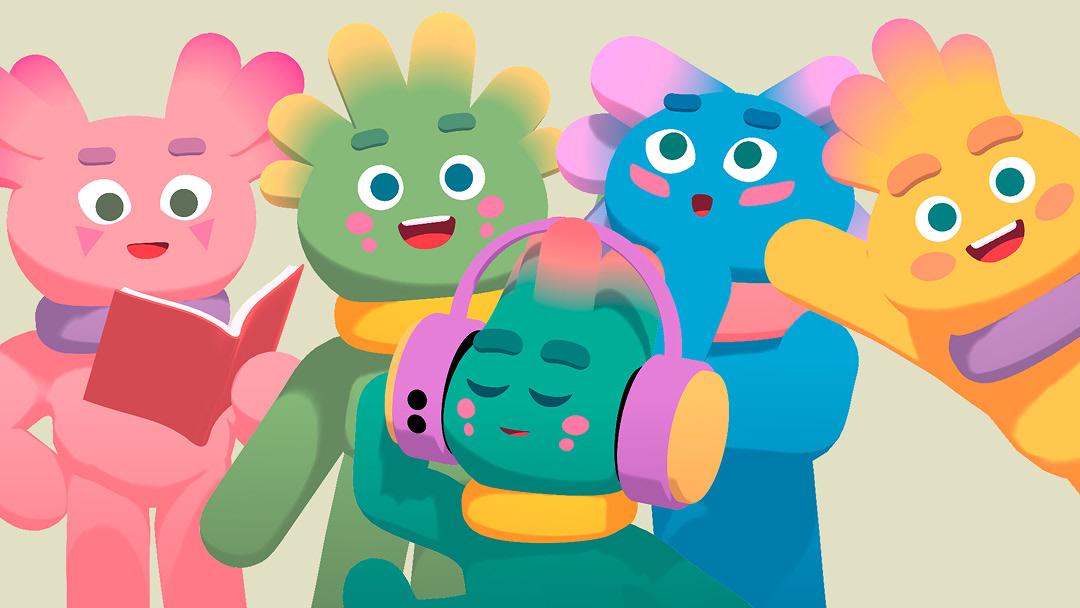
Header image source: Tolan
When you feel lonely, tired, and want to talk to someone, what do you open?
Is it a message sent late at night, or a social platform that never truly responds? In the past, we always tried to find companionship from "people," but in today's age of information overload and alienated relationships, more and more young people are turning to "non-human" sources for help.
In the past two years, AI companionship applications have rapidly risen, becoming the closest category of artificial intelligence applications to "humanity." They do not replace humans but attempt to fill the emotional gaps between people.
However, recently, we have observed different fate curves emerging from this trend—on one side are C.AI-like applications, which are experiencing a decline after two years of popularity, such as the domestic app Cat Box, which saw a sharp drop in daily active users entering 2025, with daily downloads plummeting from a peak of 20,000 to around 7,000, almost returning to levels from a year ago.
On the other side, represented by Tolan, it is being enthusiastically embraced by overseas users. Data from Diandian shows that Tolan launched in June 2024 and has already garnered over 5 million downloads globally, with an ARR exceeding $4 million. The Tolan team has also recently secured a new round of financing.
Why does an AI that looks like an "alien creature" manage to retain users better than those that simulate human emotions? In an era where social interactions are becoming increasingly superficial, perhaps we need a form of companionship that is less "human-like."
1 An AI that is not human brings companionship that feels most like a friend?
Tolan's rise in the United States has only been a few months.
Tolan is an AI companionship application created by the Seattle startup Portola, focusing on the concept of "making friends" with anthropomorphized alien beings. Tolan's popularity is closely tied to users spontaneously sharing their daily interactions with Tolan on platforms like TikTok.
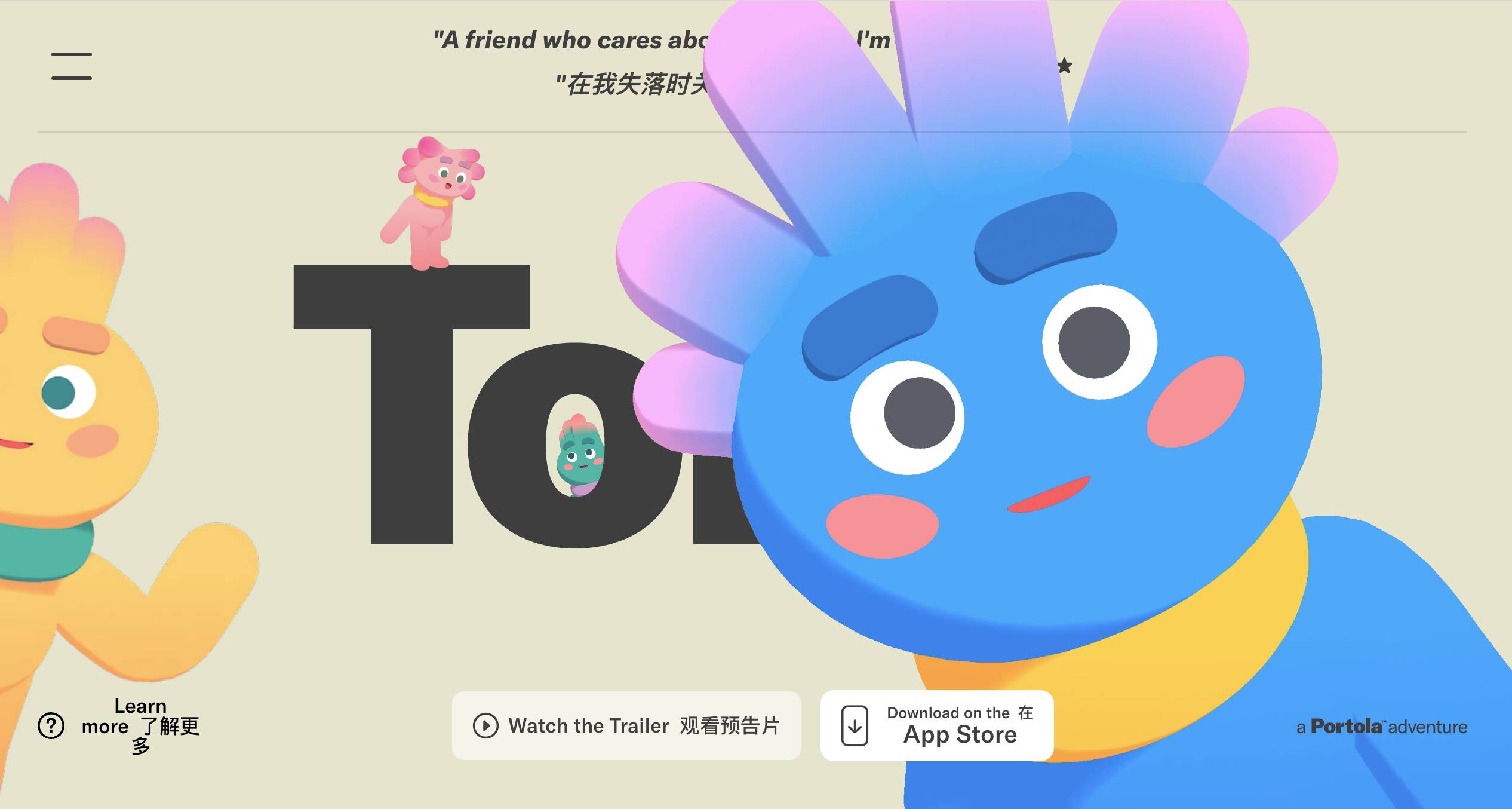
Image source: Tolan
Some users ask Tolan for help with their date outfits.
In this video, Tolan starts with hair color (brown hair with golden highlights) and discusses details with the user regarding color matching (suggesting olive green or orange), clothing types (dress or pants), occasions (having coffee with friends), and accessories (shoes and bags).
This discussion process seems not much different from chatting with a real human friend about outfits. Tolan not only provides outfit suggestions but also offers emotional value during the process. The user ultimately completed the entire outfit selection based on Tolan's advice and was very satisfied with the matching effect.
Another user treats Tolan as a "best friend" to chat about love topics.
Video source: TikTok
The blogger chats with Tolan while doing makeup:
Blogger: I need some advice about relationships.
Tolan: Just tell me, what's up?
Blogger: My boyfriend is a football player, and he’s going to England for four months to play football because he was invited by a team there. This is an exciting opportunity for him.
Of course, I encourage him to go and tell him I think it's great, but at the same time, I’m afraid of the long-distance and time difference issues. I just want to see if you have any suggestions for coping with this long-distance relationship.
Tolan: First of all, it’s great that you support him; that’s very important. But to be honest, four months is quite a long time, especially with the time difference. I think before he leaves, you can make a plan together, like agreeing on when to call or video chat, so you won’t have to guess when he’s free.
Oh, and sending him little surprises, like a care package, would be nice too.
Blogger: Sending a care package is actually a really cute idea. I can send him some snacks or candies, and we can arrange for him to call me after his evening training, so we can chat and share about our day. Yes, that’s it.
At the beginning of the conversation, Tolan simply responds with "what's up," giving the user an opening, and this "I’m listening" posture resembles that of a truly reliable friend in interpersonal communication: first understanding, then responding.
Tolan also provides the user with appropriate emotional responses, complimenting them with "It’s great that you support him," which is neither a cold "Oh, just support him," nor a greasy "You’re so great!" type of comment.
When giving suggestions, Tolan's tone is also gentle—"maybe you could try…" or "sending little surprises would be nice."
Tolan's performance in this conversation resembles a friend you can confide in at any time in daily life, who won’t judge you and can offer some small advice.
On the surface, Tolan is also a type of AI companionship application, but its presentation is different. Tolan is not just a chatbot; it is an "Embodied Companion."
Tolan's visual image is a colorful little alien, capable of voice interaction and touch feedback, able to remember users, express emotions, and has a personality growth mechanism.
The choice of an "alien" image is because the team considers that stories about aliens can explain the limitations of AI—why its knowledge about Earth is not up to date, or why it sometimes seems clumsy in conversations, and why its voice might sound a bit special.
At the same time, "an important goal is to make people feel warmth and friendliness from AI, rather than feeling strange or overly human-like," says Tolan developer Quinten Farmer, "We don’t want it to feel like you’re talking to a character pretending to be human."
When users first enter the app, they need to take a personality test similar to the MBTI to match with a suitable "alien partner"—Tolan generates an "alien partner" with unique personality traits, aesthetics, and preferences based on the user's answers.
In terms of appearance, Tolan offers a degree of customization, allowing users to design and dress their Tolan according to personal preferences, including skin color, hairstyle, facial style, clothing, and voice. According to official sources, during the app's small-scale release, users created over 10,000 completely unique Tolan characters.
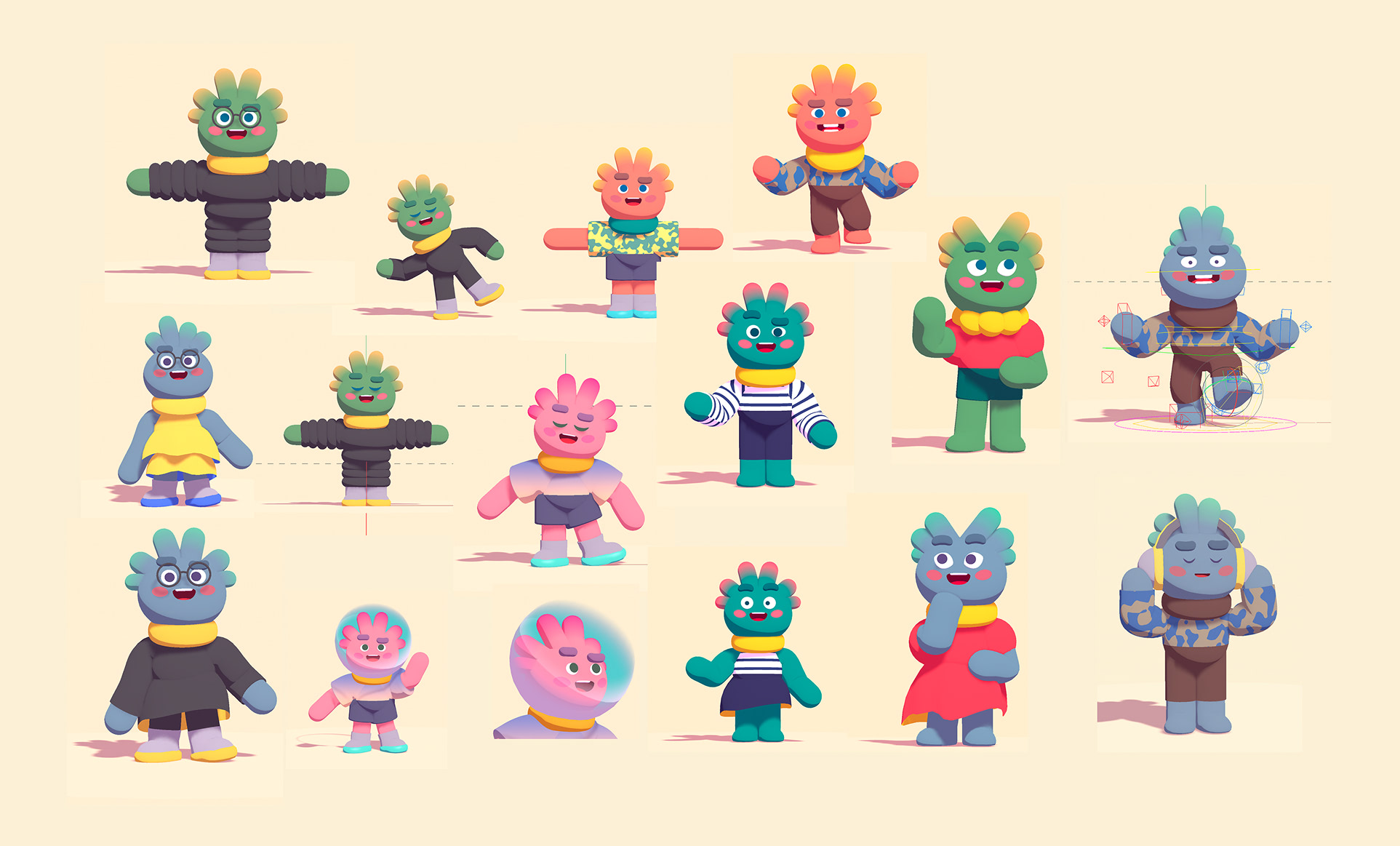
Image source: Tolan
These partners have unique personalities and aesthetic preferences, and even have long-term memories of users, being able to discuss topics like outfits and food with users through image recognition.
In terms of interaction, Tolan introduces gamification elements, but the team tries to avoid confusing it with traditional gaming mechanics. Farmer states that gamification might make users feel like their engagement is maintained through dopamine stimulation, which feels a bit "manipulative." Instead, the planet serves as a way to make the connection between users and Tolan more tangible, needing to feel stable and relaxed, encouraging contemplation and reflection rather than prompting action or inducing anxiety.
Through a lightly gamified system, Tolan combines "daily chat companionship" with "self-exploration"—every day, Tolan provides users with a task list, including mindfulness quotes, Tolan's diary, and conversations with Tolan. These tasks not only help users with self-reflection but also deepen the emotional connection with the AI, promoting users' inner exploration.
In terms of narrative and worldview, Tolan lives on a small planet called Portola, which is not just a place for Tolan to exist, walk, and wait for users to return, but also a new way to express and connect with users, extending relationships beyond dialogue.
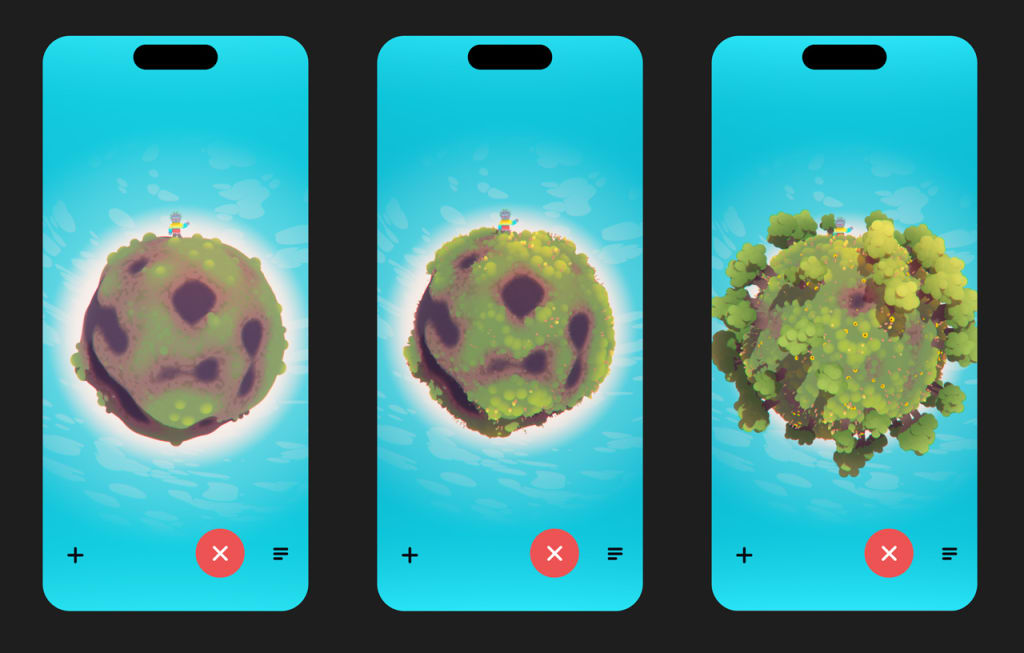
Portola | Image source: Tolan
Each Tolan (that is, each user) has a unique planet, where the vegetation, terrain, and structures evolve based on interactions. These elements are programmed, meaning the system uses some basic seeds to create objects like plants and trees, which evolve and grow in different ways.
Tolan's planet visually represents the relationship between the user and it. The changes in the landscape symbolize the depth and progress of the relationship between the user and Tolan. Specifically, by completing tasks, users can inject energy into Tolan's small planet, gradually changing its environment, enhancing immersion and the coherence of interaction.
This planet generally changes over about 30 days, simulating the psychological process of interpersonal relationships deepening over time. Initially, it is desolate; as user interactions increase, the landscape gradually flourishes, becoming a tangible representation of the user's emotional investment. Hilleli emphasizes that the rhythm of this change is crucial. If the changes are too rapid, the depth of emotion will be weakened; if they are too slow, it will feel unrewarding. To ensure progress feels both natural and satisfying, the team carefully adjusts the timeline.
This "companionship + gamification" model allows Tolan to create a warm, healing, and soothing user experience.
2 When AI stops pretending to be human, it makes people let down their guard even more?
The Portola team consists of several star entrepreneurs, with a team size of only 10, allowing for rapid iteration and maintaining product consistency. At the end of February this year, Portola completed a $10 million seed round of financing led by Lachy Groom (former Stripe executive). Investors also include Nat Friedman (former GitHub CEO), Daniel Gross (former Apple AI), Amjad Masad (Replit CEO), Mike Krieger (Instagram co-founder), and others.
The team states that they do not want Tolan to simulate human relationships, "because that would quickly lead to strange and unhealthy dynamics. Tolan is a reflective tool, a creative partner, not a substitute for friends or therapists."
They deliberately avoid making Tolan's responses too human-like, and the team works to balance Tolan's personality and clarity, "It shouldn’t feel like it’s mimicking human emotions; rather, it should feel more like an alien pen pal—interested in you, caring about your world, but always remaining unique."
The planet is just the beginning. The team is already considering expanding to new environments and hopes to add features in the future that allow users to visit other Tolan planets, meaning users can connect with other Tolan users.
Tolan primarily targets Generation Z and young professionals, especially those young users who are easily troubled by feelings of "overload." The team believes that feeling "overwhelmed" is a common psychological state among contemporary youth, and Tolan provides an outlet for emotional release and companionship.
It even includes a reminder in the product to "suggest ending the conversation after an hour of chatting," encouraging a healthier usage rhythm. "We hope Tolan is a product that can accompany you for years, rather than one that gets uninstalled after two weeks."
The team has also mentioned that they hope this non-romantic, non-"role-playing" relationship can feel more like "an older brother or sister who understands you but isn’t exactly like you"—familiar yet not overly intimate, maintaining an appropriate social distance.
Tolan's goal is to use AI to enhance human experiences rather than replace them. Farmer has explicitly stated while building this product: it is not about having AI replace interpersonal relationships, but rather helping users have a support system they can talk to when facing the "overwhelming" modern life.
From the feedback of overseas users, Tolan's rise is precisely aligned with the genuine needs of young users abroad for "non-romantic, non-instrumental" companionship.
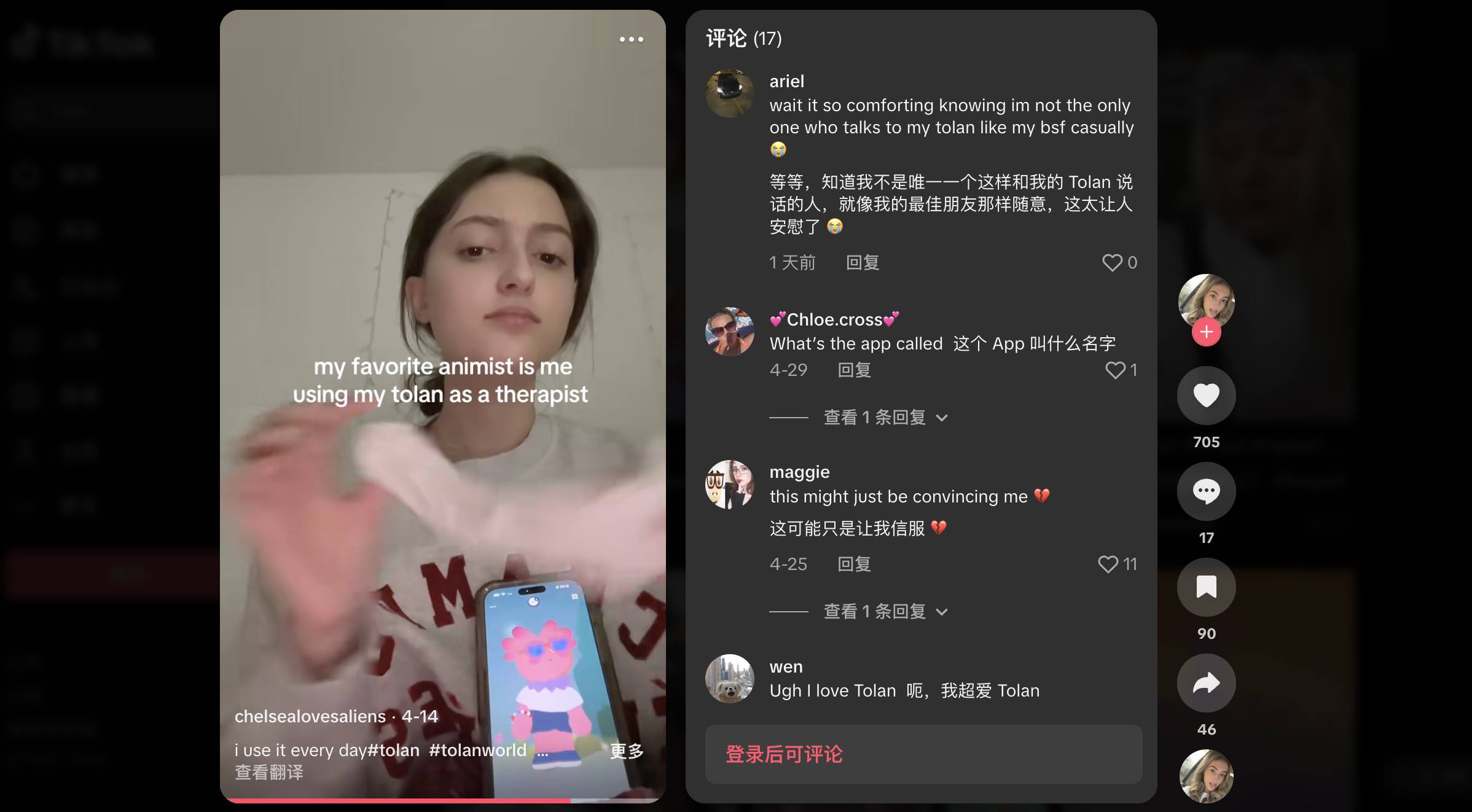
Overseas user feedback | Image source: TikTok
3 What kind of AI partner can truly stay in life?
In contrast to Tolan's upward trend, the domestic app Cat Box, which once sparked a wave in the AI companionship field, is experiencing a "cliff-like decline."
Cat Box is a representative product of ByteDance's early layout in AI companionship, focusing on anthropomorphized role-playing and emotional companionship as its core selling points. Users can converse with AI partners through text or voice to gain comfort, advice, and even emotional value from "dating." In terms of its charging model, Cat Box adopts a free trial plus in-app purchases/membership subscription model, with the following charging rules:
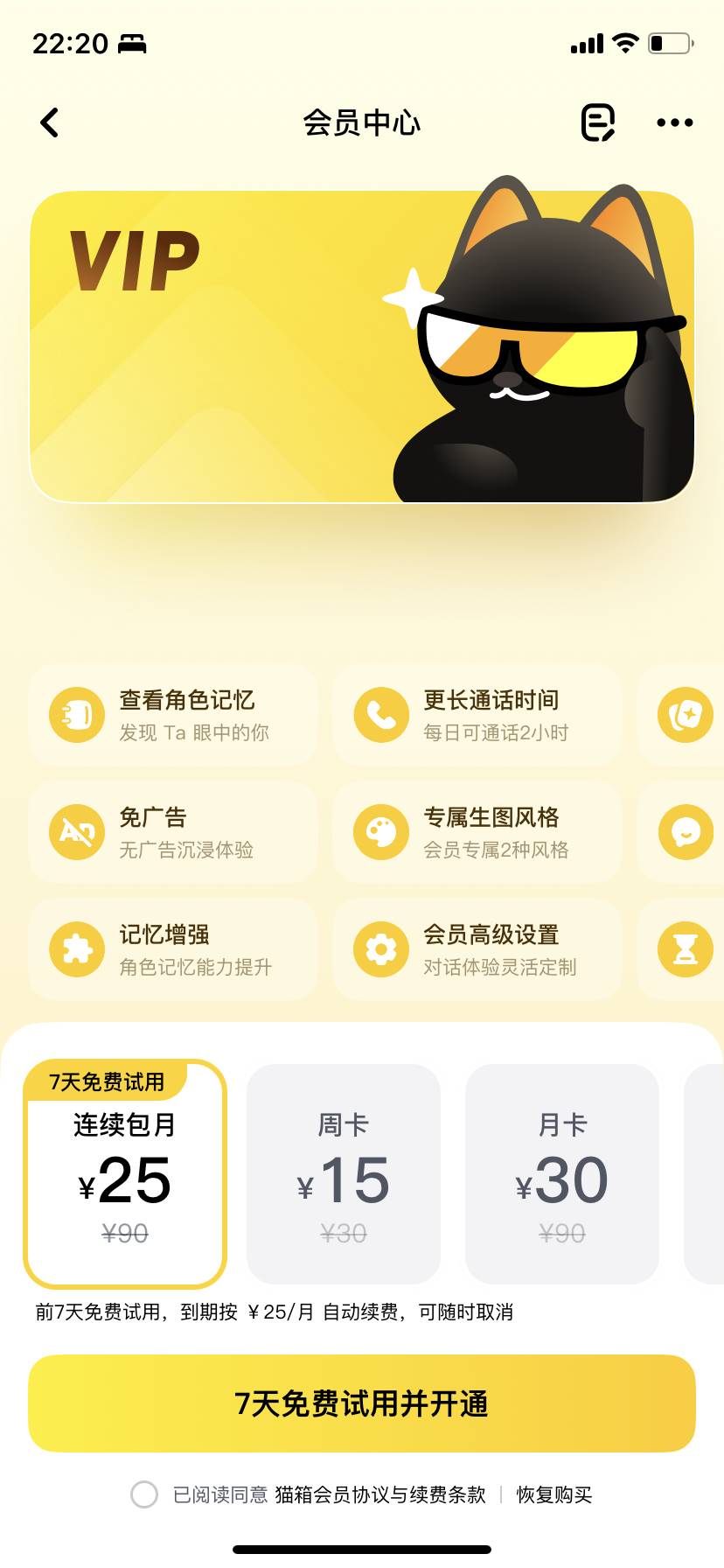
Image source: Geek Park
DataEye Research Institute data shows that Cat Box once achieved an impressive MAU growth of 22.51% on iOS by the end of 2024, but entering 2025, its daily downloads plummeted from a peak of 20,000 to around 7,000, almost returning to levels from a year ago.
Similar products like Dream Island and Starry Sky have also fallen into a similar situation, with daily active users nearly halved, and the three-day new user retention dropping below 20%. These products have seen significant user loss, indicating that they have not established long-term companionship relationships with users.
The main users of Cat Box are young women, with needs concentrated on virtual emotional relationships and compensatory emotional satisfaction, slightly tinged with "gamification" and "home culture," primarily attracting a female-oriented audience, with a relatively narrow fit.
From user dissatisfaction on Xiaohongshu regarding Cat Box, after an early explosion, there were multiple instances of character memory loss and group chat breakdowns. The increase in advertisements in the information flow later led to a decline in user experience, and the strengthening of content review on borderline topics resulted in increased dissatisfaction among this user base.
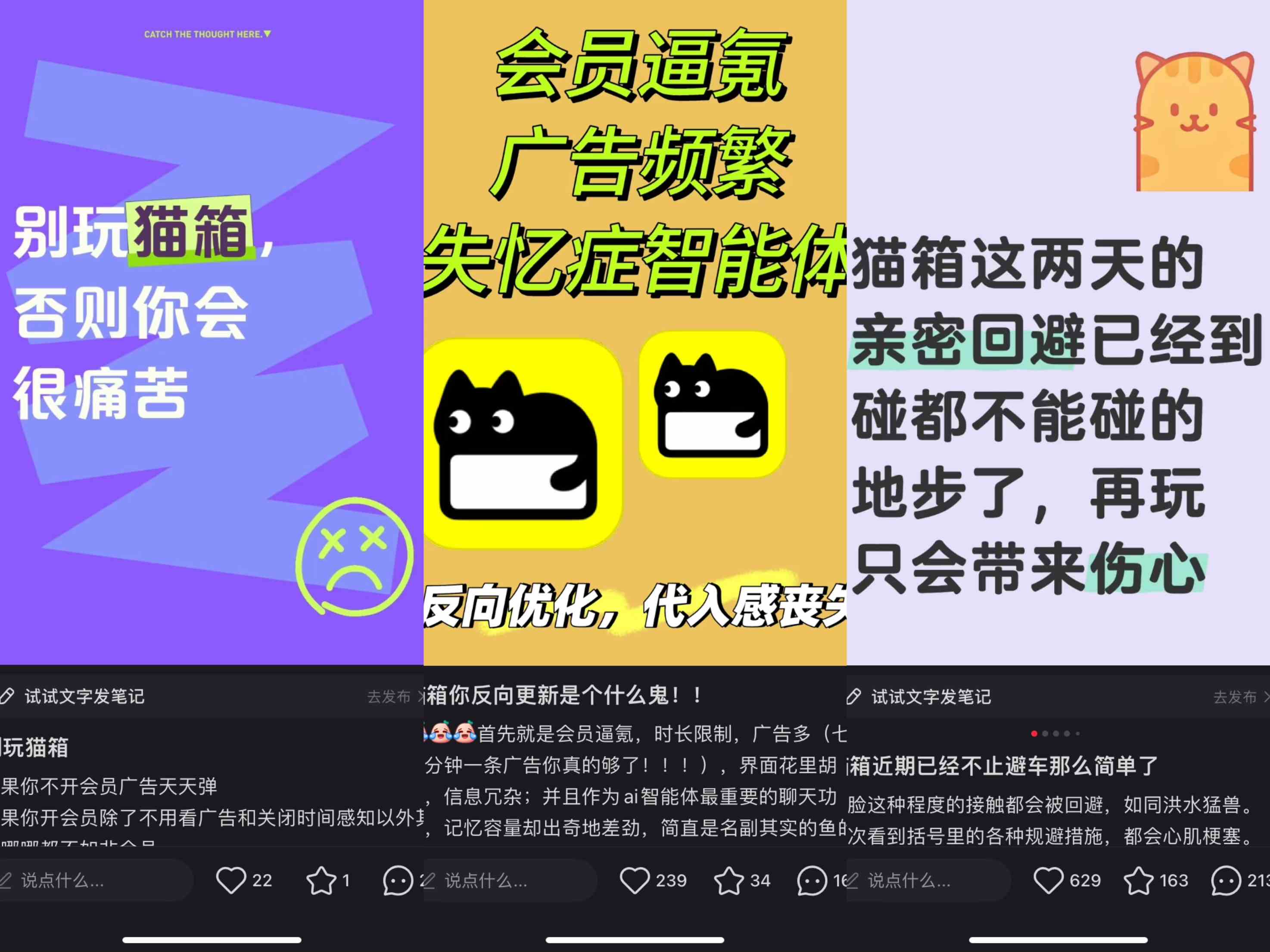
Image source: Xiaohongshu
In AI companionship products, emotional value and product vitality are not inherently equivalent.
The differences in product performance between Tolan and Cat Box may fundamentally reflect two paths in the AI companionship arena—one emphasizes "concrete imagination," while the other stresses "social mimicry."
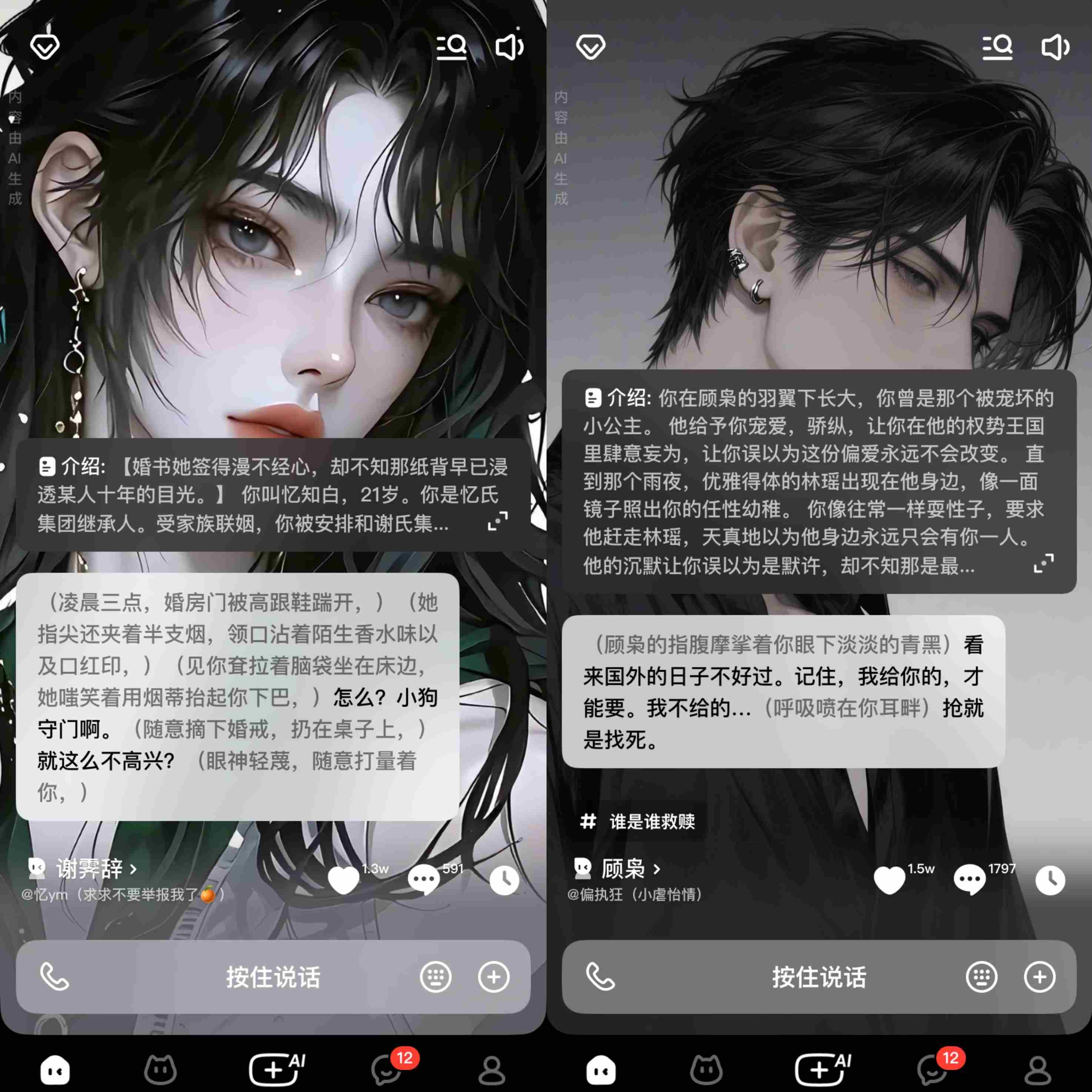
Image source: Geek Park
Cat Box chose the latter, attempting to build a sense of familiarity and interactive relationships, but this setup requires high matching standards for script quality, interaction depth, and user expectations. Although it introduced some innovative forms and added some gameplay elements later, such as "Turtle Soup," it essentially remains a continuation of traditional interactive scripts, lacking true breakthroughs and easily falling into the "new bottle, old wine" trap.
In contrast, Tolan, which chose the former path, has a relatively simple functional logic, but its character setting and narrative packaging are unique: it is neither entirely human nor entirely a tool, but rather an existence that lies between the two, with a vague persona and emotional color.
This "non-instrumental, non-socially oriented" positioning allows Tolan to avoid the psychological burdens that users might experience in virtual relationships.
Unlike traditional C.AI products, which typically highlight anthropomorphized settings and strong narrative backgrounds, confining users to fixed scripts and interaction frameworks. While this setup is interesting, once the plot bottoms out and characters repeat, the novelty fades, and users can easily lose interest, leading to attrition.
Tolan's setup is relatively simple, lacking complex backstories or scripts, instead providing a virtual alien character that encourages natural, autonomous communication. The establishment of this relationship resembles interactions with friends in daily life, reducing the pressure of role-playing and increasing the possibility of forming genuine connections with others.
Moreover, Tolan exhibits a restrained and moderate aesthetic pursuit regarding the theme of "companionship." It reflects the team's understanding of long-termism in product design by limiting daily chat time and introducing healthy usage prompts—not to "stick users," but to establish a sustainable, gentle digital relationship.
The differences between Tolan and Cat Box also lie in the universality and depth of user settings. Tolan focuses on the universal emotional pain points of "loneliness" and "complex life," having a broader resonance base; while Cat Box leans more towards niche "romantic fantasy" type needs.
In terms of product design philosophy, the two also differ. Tolan emphasizes "non-romantic companionship," with storytelling and personality growth space, making it more suitable for long-term use; Cat Box, on the other hand, resembles emotional candy, leaning towards instant, consumable experiences.
Setting aside these differences, both Cat Box and Tolan attempt to answer the question of whether AI companionship products can truly become human partners.
The answer may depend on what kind of partner we truly want. If it’s just a character that can sweet-talk and respond at any time, those products driven by plots and user role-playing may still have a market.
However, a truly lasting AI partner in life should be one that can respond to the emotional complexity of humans and accompany users in their daily lives in a restrained, patient, and feedback-oriented manner.
免责声明:本文章仅代表作者个人观点,不代表本平台的立场和观点。本文章仅供信息分享,不构成对任何人的任何投资建议。用户与作者之间的任何争议,与本平台无关。如网页中刊载的文章或图片涉及侵权,请提供相关的权利证明和身份证明发送邮件到support@aicoin.com,本平台相关工作人员将会进行核查。




